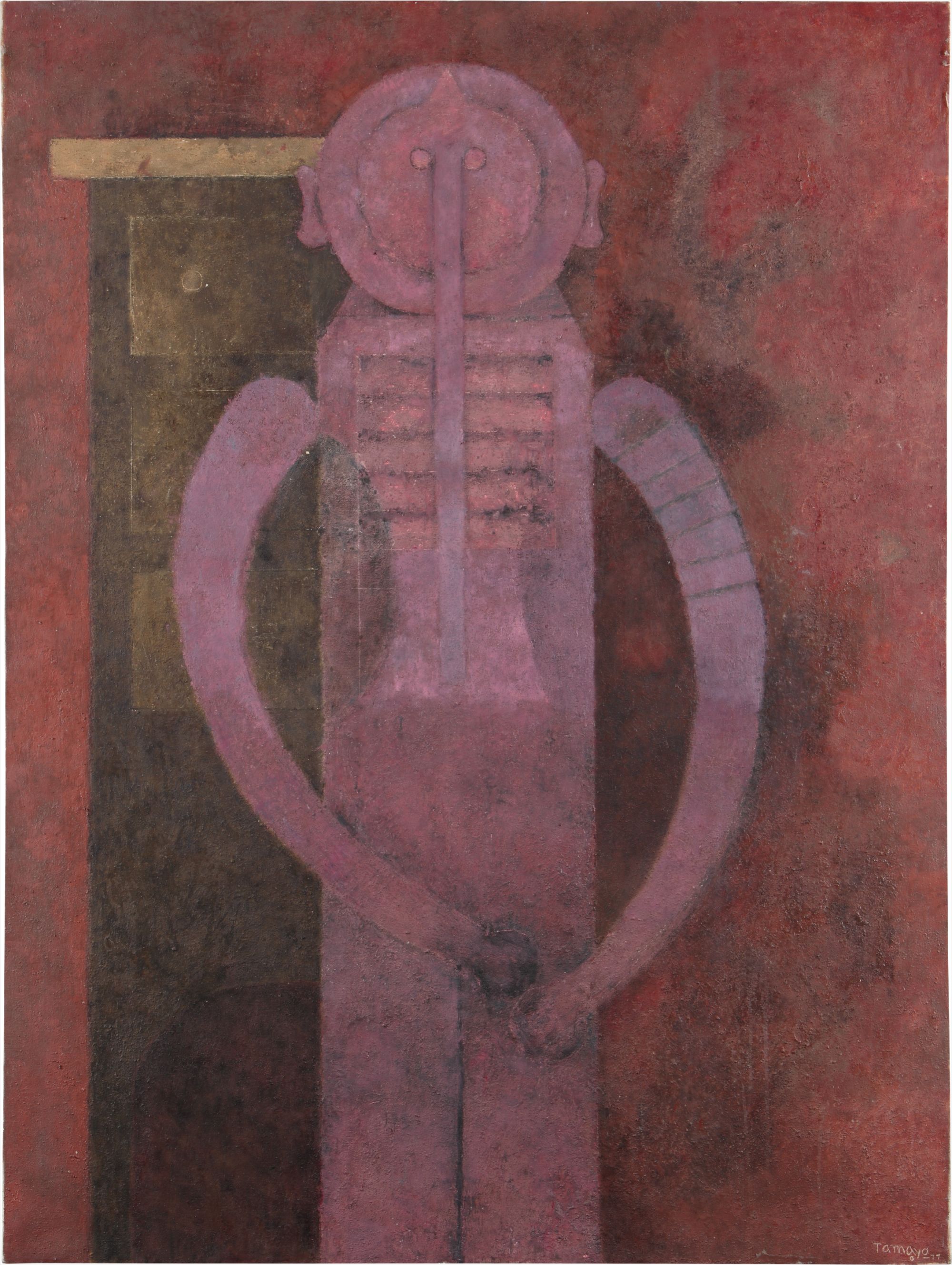

26
Rufino Tamayo
Hombre en rosa
Full-Cataloguing
By the age of eleven, Rufino Tamayo knew he wanted to become a painter, and his art studies, even at this young age, demonstrated innate talent. This was later confirmed by Diego Rivera, when the established master viewed Tamayo’s work in a student exhibition and simply stated, “This kid is a painter."
Tamayo became an incredibly prolific artist working until his death at the age of 91. One of the aspects that most profoundly defined his work was his mestizaje; being half European and half Zapotec Indian. Being raised in a mestizo society and educated in Mexico as well as Europe, Tamayo was in a privileged position in relation to other contemporary painters. This was because most of the leading avant-garde artists of the time, such as Picasso and Gauguin, had only recently “discovered” the ancient and indigenous art of Pre-Hispanic, African and Oceanic civilizations, which they rapidly began to incorporate into their art. To Tamayo, however, this came naturally as he was born and raised in a culture with indigenous roots. He embraced his mestizo heritage, at a time that mestizos were discriminated against and looked down upon. At the same time, Tamayo had been exposed to every artistic school of his time, including Fauvism, the classical French school, Cubism, and eventually Abstract Expressionism, all of which contributed to his style as it developed throughout his life.
At the age of 27, Tamayo travelled outside his country to New York City. After this early experience he returned many times to New York, during which Tamayo consolidated his position in the international art scene. However, he was routinely chastised for having left Mexico because critics alleged that this distanced him from his Mexican origins. Ironically, Tamayo’s travels and exposure to different cultures and artistic schools enabled him to reevaluate his understanding of Mexican art in the traditional sense and to see it with fresh eyes. Throughout his oeuvre, Tamayo displays tension, struggling to reafirm his Mexican identity while simultaneously experimenting with the aesthetic innovations and trends of the time. This naturally led to a myriad of stylistic periods in his work, showing his constant growth and natural desire to challenge himself artistically, while remaining relevant to the times.
By the 1970s, Tamayo had returned to a permanent residence in Mexico. He had also further consolidated his style, consistently structuring his figures using simple geometric shapes and thickening his paint through the use of coarse sand. This technique was almost certainly influenced by the work of Jean Dubuffet and lent the paintings of this period a raw, unfinished quality, emphasizing the overall power of the image rather than the minute details. During this time, Tamayo began removing his figures from easily identifiable spaces, as described by Raquel Tibol when she wrote, “Though his figures might once have clenched a telephone hysterically or might have been caught in an oppressive domestic setting, they now exist in an uneventful environment.” This lends the work a universal quality, moving it closer to abstraction without abandoning the figure.
The present lot, Hombre en rosa, 1977, is a prime example of Tamayo’s work from this period. Here the figure has been fattened and simplified, echoing both the structure behind him, which resembles a chest of drawers, and the canvas itself. The color palette has become uniform: man, object and background are all depicted in various shades of pink and brown, revealing a dialogue with Abstract Expressionism as well as a passionate exploration of surface and texture. At first, it becomes difficult to understand how this painting relates to a preoccupation with Mexican identity. However, upon closer inspection, it becomes evident that the figure is fundamentally grounded in the style of Pre-Columbian objects, with which Tamayo was so intimately familiar, rerooting the painting in Mexico while simultaneously contextualizing it within international
contemporary art history.
Rufino Tamayo
Mexican | B. 1899 D. 1991Born in Oaxaca, Mexico, Rufino Tamayo was an incredibly prolific artist working until his death at the age of 91. Half-European and half-Zapotec Indian, Tamayo produced work that was defined by his mestizo, or mixed-blood, heritage. Through his studies, Tamayo was exposed to every artistic school of his time including Fauvism, the classical French school, Cubism and Abstract Expressionism, all of which contributed to his style as it developed throughout his life.
Tamayo reacted strongly against the Mexican muralists who dominated the art scene during his coming of age. Instead, his work is firmly grounded in realism while taking creative liberties in color and composition. His art emulates a unique blend of Cubism and Surrealism, joined with a deep understanding of Mexican culture.